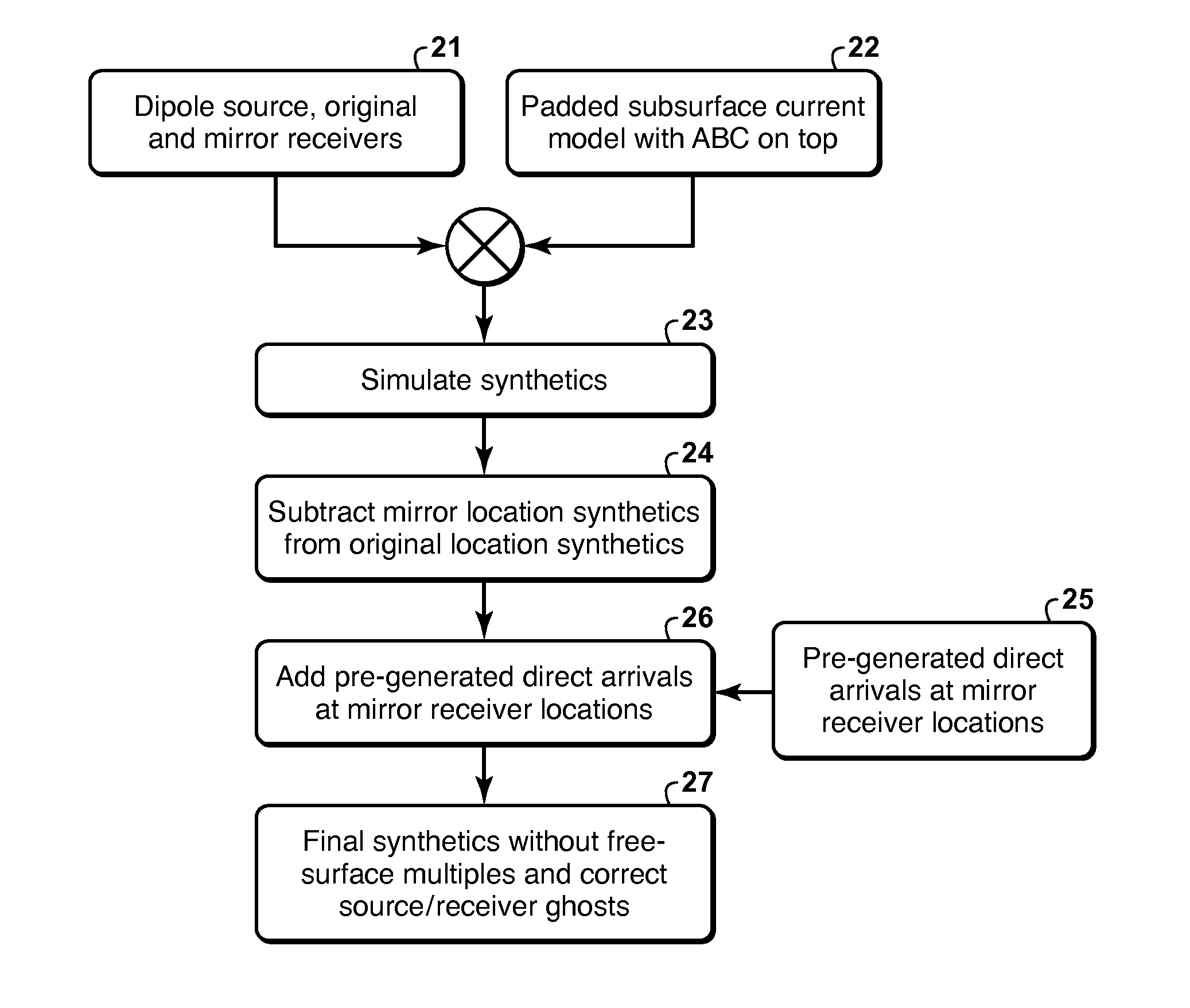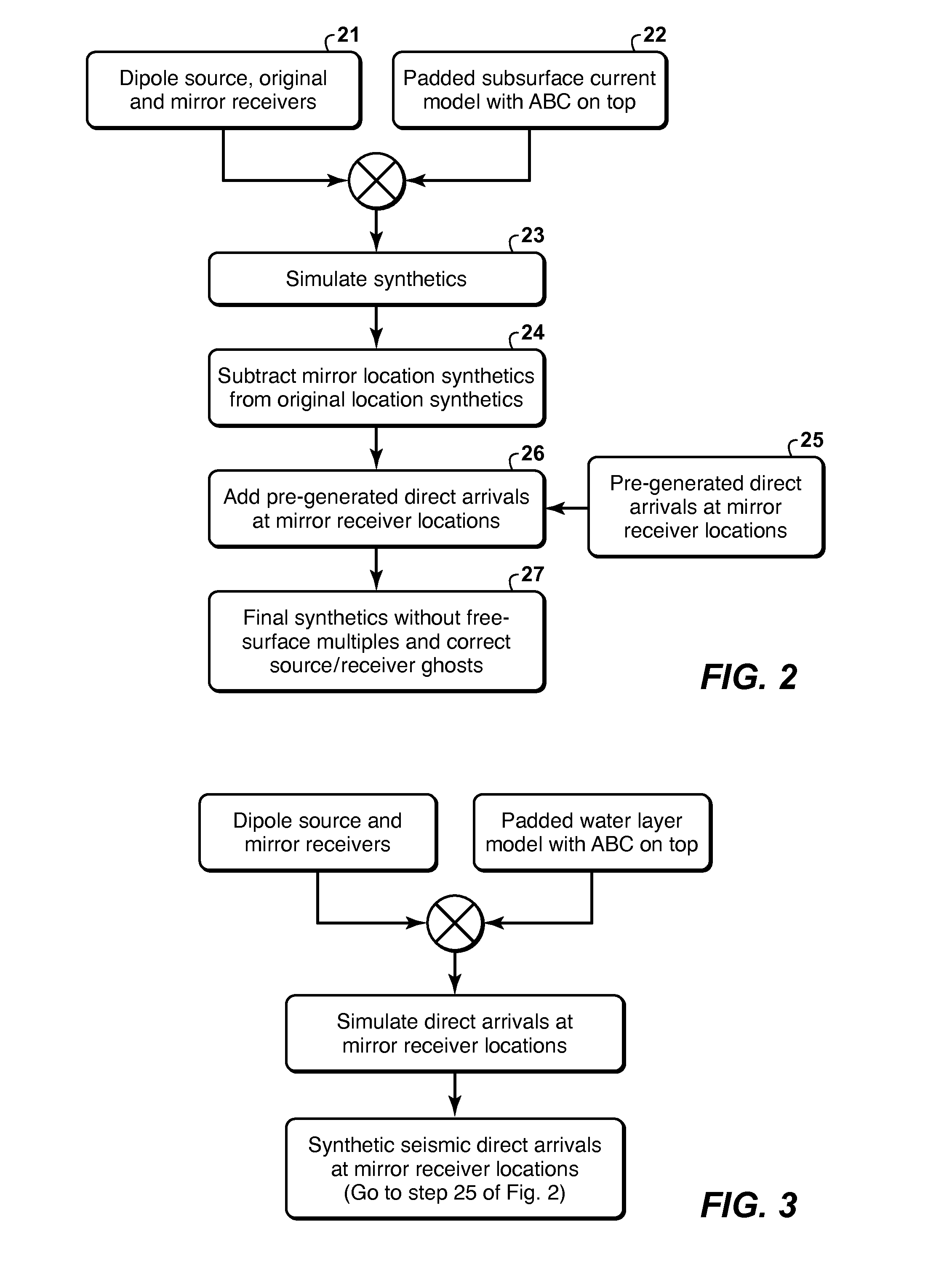Full-Wavefield Inversion Using Mirror Source-Receiver Geometry
a technology of source and receiver, applied in the field of geophysical prospecting for hydrocarbons, can solve the problems of difficult numerical simulation of free-surface multiples, generation of interface errors, and inability to accurately simulate source and receiver ghosts in synthetic data
- Summary
- Abstract
- Description
- Claims
- Application Information
AI Technical Summary
Benefits of technology
Problems solved by technology
Method used
Image
Examples
Embodiment Construction
[0014]The present inventive method allows the user to accurately model and invert the direct arrivals without generating free-surface multiples in the simulated data. (Direct arrivals are seismic waves that propagate from a source directly to a receiver without reflecting from a region interface or bending.) The method also generates correct source and receiver ghosts without generating free-surface multiples.
[0015]The method introduces appropriate source and receiver ghosts without modeling free-surface multiples in the simulated data. In seismic simulation, the monopole source is replaced with a dipole source which is created by including a source signature of the opposite polarity at the mirror (reflected through the plane of the free surface) location of the original source location. Other than polarity, the source signature at a mirror location is the same as the source signature at the corresponding original location. Likewise, monopole receivers are replaced with a dipole rec...
PUM
 Login to View More
Login to View More Abstract
Description
Claims
Application Information
 Login to View More
Login to View More - R&D
- Intellectual Property
- Life Sciences
- Materials
- Tech Scout
- Unparalleled Data Quality
- Higher Quality Content
- 60% Fewer Hallucinations
Browse by: Latest US Patents, China's latest patents, Technical Efficacy Thesaurus, Application Domain, Technology Topic, Popular Technical Reports.
© 2025 PatSnap. All rights reserved.Legal|Privacy policy|Modern Slavery Act Transparency Statement|Sitemap|About US| Contact US: help@patsnap.com



